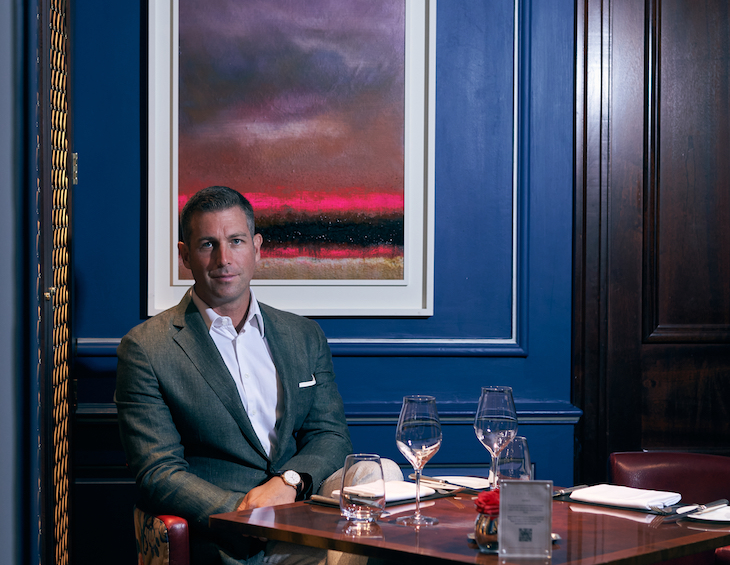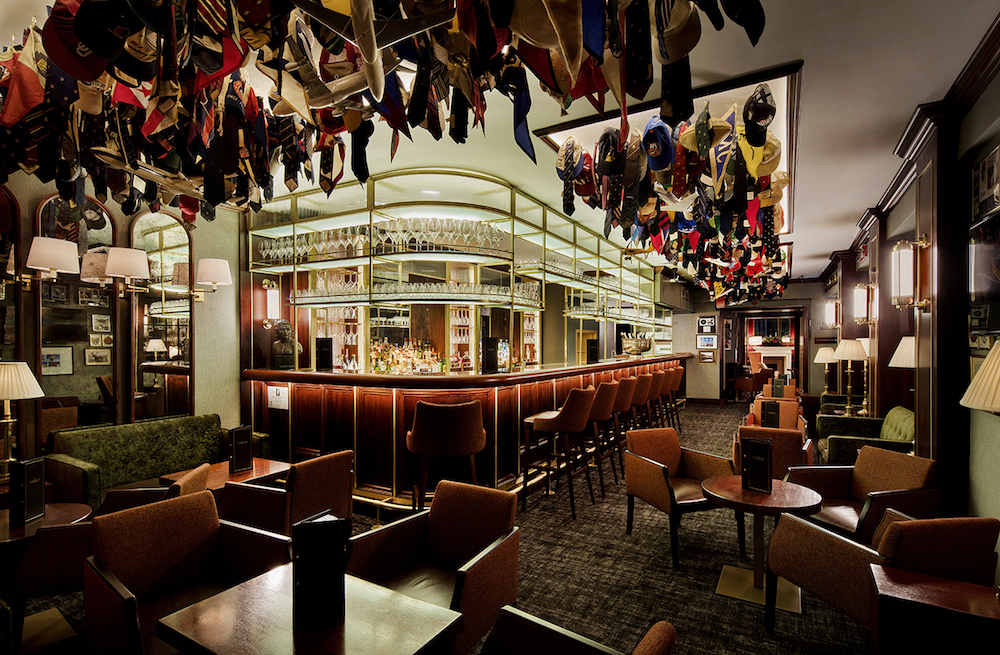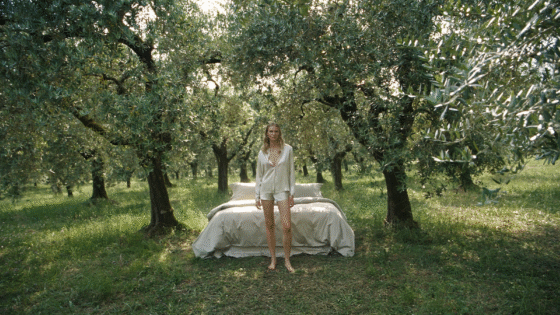Editor Hamish Kilburn catches up with Dale Atkinson, Founding Director of Rosendale Design, to understand more about his latest project inside The Stafford London as well as how F&B design on the luxury scene is changing…

It is arguably more important now than ever before to support those who are leading our industry forward with purpose; the solution-driven individuals who with each project they complete are challenging conventional design while meeting new demands of modern travellers – often ahead of time.
It may be too early to predict the long-term impact the pandemic will have on hospitality, but it is clear that main cities will be quieter territories in the near future. Therefore, hotels have to work harder to meaningfully attract tomorrow’s travellers and guests.
In this new and unwritten era, the power of F&B will play a major role. And to understand more, I met with Dale Atkinson, former Foster + Partners designer who is now Founding Director of Rosendale Design. Shortly after he had completed his latest project – The Park Suite and guestrooms inside The Stafford London – I wanted to know more about how his studio is gearing itself up for a post-pandemic world.
Hamish Kilburn: Can you tell us about your latest project?
Dale Atkinson: We were originally tasked with the redesign for the Game Bird, the Stafford’s main F&B offering and due to its success we were then asked to look at the redesign of their destination bar, the American Bar. We were able to redesign and optimise the main bar to ensure that the bartenders were able to send out more orders at once increasing turnover. The redesign was more of an evolution than revolution due to the devout following it already boasted.
“As the Stafford is seen as a quintessential British hotel, we wanted to celebrate that by employing, predominantly, British brands.” – Dale Atkinson, Founding Director, Rosendale Design.
Following the American Bar’s success, we were then asked to look at designing the rooms of the main house. As the hotel boasts and a very high occupancy rate, it was decided to redesign the rooms floor by floor, so not to lose revenue. Our latest rooms that we have handed over include the Park Suite, a maisonette suite with the bedroom and bathroom on the lower floor, and the sitting room and feature terrace, with stunning views over the London skyline towards the London Eye, on the upper floor. As the Stafford is seen as a quintessential British hotel, we wanted to celebrate that by employing, predominantly, British brands (ie. Morris and Co, Perrin and Rowe, Brintons as well as British artisan craftsmen.

Image caption: The Park Suite inside The Stafford London | Image credit: The Stafford London
HK: Have you pivoted the Rosendale Design business model since the Covid-19 crisis hit?
DA: There is no doubt that the hospitality sector has been one of the hardest hit. Luckily, as a studio, we have always been quite malleable to hardships and obstacles. As designers it is up to us to be creative not only in our designs for our clients but also in business and how we deal with these hardships. We have always taken on residential work as well, albeit this has been less of a focus, but due to people spending more time at home due to the lockdowns and also being asked to work from home, many are now seeing this as an opportune moment to change their space due to new ways in which they live and use their homes. We have also looked to start a new line of furniture and lighting products that we feel exude the design principals that we have become known for, timeless, contemporary, and refined.
HK: F&B is your core pillar. Are you noticing that your luxury clients are requesting any specific design features, such as booth seating and utilising outdoor spaces?
DA: We are still seeing a lot of interest in spaces despite everything that is happening, so we know there are lots of projects waiting to happen because we often are asked to accompany clients when seeing potential sites to get our views.

Image credit: Norma Restaurant, designed by Rosendale Design
One aspect that is now more prevalent than ever before is outdoor/terrace spaces. In light of the recent pandemic, people want to be reassured they are in safe spaces, and outdoor seating areas can provide this confidence. Once terraces and outdoors spaces were a nice to have, now they have become a must have, which is also quite hard to come across in a condensed city such as London.
We believe that booth seating is here to stay, where tables can feel more segregated but still feel a part of a buzzing atmosphere. It is the designer’s job to use creative ways to create divisions, whilst not killing the atmosphere of any F&B outlet, whether it be a stand-alone restaurant or within a hotel.
Another new expectation is that people will, for some time at least, feel uneasy sitting so close to another table. So, restaurants, bars, and hotels will need more space which will be very difficult for many smaller London restaurant where the whole business model was based on getting in as many tables as possible.
HK: Are there any interesting or quirky ways that you can make spaces fit into a world with Covid-19?
DA: There will be many ways to take designs forward in this ’new normal’ we are experiencing, and copper is an excellent example of antimicrobial materials that are proven to kill bacteria within a couple hours. We are also seeing that brass also has similar properties so these will, most likely, be materials that pop up even more at various touch points. New microbial sprays are being used that will last a few months, and there will be a lot of fabrics that will be produced with antimicrobial properties.
We have seen fabrics impregnated with pure silver to help stop bacteria multiplying and creating odours and I believe there will be more fabrics produced with copper or similar ores imbedded into the threads to help kill bacteria and stop the spread of viruses.

Image caption: The American Bar inside The Stafford London. | Image credit: Rosendale Design
HK: How will the typical dining experience change for a luxury consumer?
DA: For the luxury end of the dining experience, the issue of more space around the tables is already common place due to things such as trolley services and the like, but there will certainly be more of a shift towards not only paperless, but touches experiences. The technology has been around for years, so is nothing new, but there will be far more sensor-controlled toilettes and sinks.
One aspect I think that we must never lose is the element of human interaction. There is no replacement for having the waiter explaining the menu and the ingredients used within the dishes, or the intricacies of the wine list. It is in our nature to crave interaction; it just needs to be in a safe environment.
Has Covid-19 created barriers as you work with teams and suppliers around the globe?
At the start of the lockdown, it was an extreme paradigm shift not only in the way work but the way we live. There were, what we perceived, many barriers to begin with but we learned to circumnavigate them and if anything, I believe we have learned to streamline the way we work. For example, travel to and from meetings is now seen as unproductive time that is lost, when you can now just have a Zoom chat. Of course there are certain meetings that one must be on site to see everyone and things such as snags or how the colour temperature or luminous output of certain light fittings might affect a certain space, or how certain finishes within a room affect how it is perceived, but on the whole it has forced us to re-evaluate our perception of the value of time, increasing productivity which only benefits the client team.
HK: How do you envision for the future of hospitality and hospitality design?
DA: It will take time to settle again and we will all be living by a new set of values, but I do believe the industry, as a whole, will persevere and come out on top. It will have to. As one of the largest sectors of employment not only in the UK, but the world. Hospitality will respond and I believe the major changes will be in how much space we see as safe.
Hotels and restaurants will need to provide patrons with more of it but this is easier said than done especially for those who are already operating in tight spaces. A big shift that we have already seen occur here in the UK is that people are now preferring to go to the countryside for short escapes as opposed to staying in the cities. Even after the theatres and the like reopen, I think there will be more of a celebration of the great outdoors, which will in itself, present new exciting opportunities.
HK: How do you differentiate Rosendale Design from other design studio’s – what are your core team’s USPs?
DA: We view each project as an individual, quite often we are designing for a client whether it be their home, or a restaurant for a chef, or for a brand for a hotel, and each project has its own concept. As a studio we never start by saying, ‘ok, so what is cool right now’. This way one ends up with a project that resembles many others of a time or epoch, and we strive, as a studio, to create timeless spaces so that they are as relevant 10 years later as the day they were built. We feel that to achieve this individuality we must tell the story of the client and their values/ personalities.
For residential projects we develop close reports with the client and try to get to know them as best we can. They will be living in the space afterwards so they must be fully onboard with our vision. Equally with restaurants, Chefs can spend more time in the kitchen than at home so the restaurant can in effect be their second home. We do often use the menus as a base to our design concept with gives it stronger roots. With hotels we look to bridge the ethos of the brand with the vernacular materials and cultures. Research forms the bedrock of any of our projects as it is what grounds it and gives it roots, otherwise it risks becoming a fashion.
Another USP is our extensive concept document that we produce, which includes layout options, furniture options, mood boards, and key to this document, are the 3D concept sketches (we boast a very accomplished artist) that gives clients an initial idea of how the space will look. In fact, most of our studio time goes into the first two stages of the design process, ensuring that the concept we are delivering is in line with the client’s expectations.
“We like to think of ourselves as a personable studio and so the people we are working with will, more often than not, be our first source of inspiration.” – Dale Atkinson, Founding Director, Rosendale Design.
HK: Where do you look to for inspiration?
DA: We see every project individually so our inspiration will come from different sources every time. One of our main strengths is the research we undertake to understand the culture of the area or people. We like to think of ourselves as a personable studio and so the people we are working with will, more often than not, be our first source of inspiration, ensuring our project with be as individual as the client/brand behind the project.
HK: What are you working on at the moment and what projects are in the pipeline?
DA: We have a couple residential projects in the UK that we are working on and we are also in the middle of a project with the Santa Marina Resort in Mykonos, which is due to open in May 2021. This will be a very exciting project and cannot wait to see how it will be received. We are also working on a very exciting restaurant concept, in Mayfair, which, has also been put back to the end of spring 2021.
Main image credit: Rosendale Design




